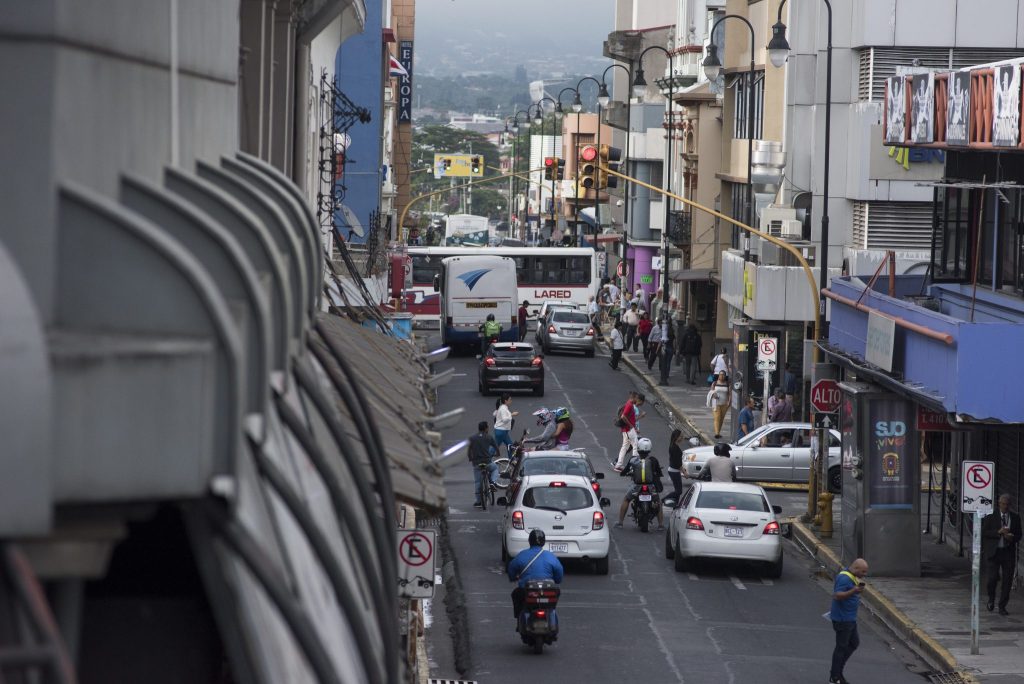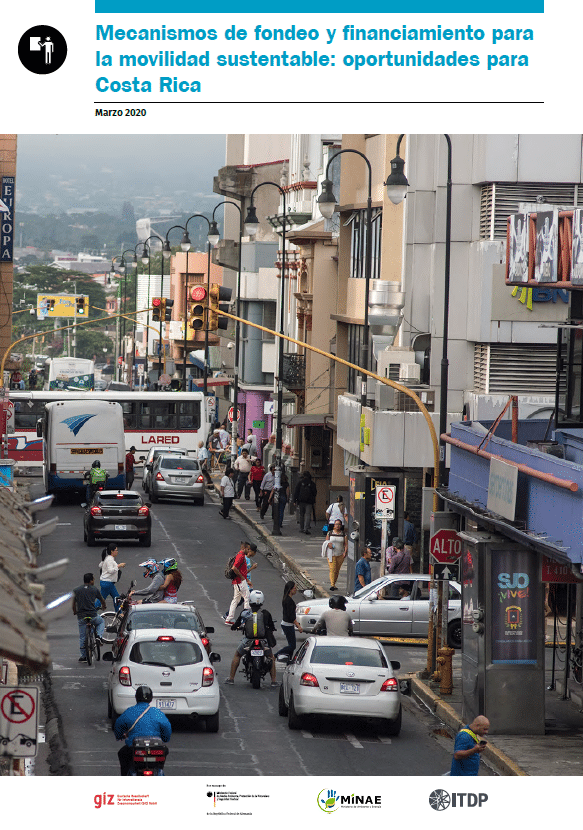
With the aim of increasing the resources that can be allocated to sustainable urban mobility projects and policies, the Institute for Transport and Development Policies (ITDP), on behalf of the GIZ-led project MiTransporte, presented the study “Funding and financing mechanisms for sustainable mobility: opportunities for Costa Rica” that identifies possible measures with the potential to generate additional resources for sustainable transport projects in the Great Metropolitan Area San José.
With this study we want to lay the foundations for a critical discussion on new forms of funding and financing that can be used by national and municipal governments to pave the ground for the transition towards sustainable mobility in the cities of Costa Rica.
Claus Kruse, Director of MiTransporte
One of the proposals with the highest potential refers to an adjustment of the vehicle property tax included in the cost of the circulation permit (marchamo) paid annually by vehicle owners. Currently, this tax does not consider the environmental impact of vehicles, beyond the exemptions made for electric vehicles. Thus, the study proposes to incorporate an environmental component by designing a scheme that leads to lower taxes for efficient vehicles and higher taxes for vehicles with a high fuel consumption per kilometer and respectively higher CO2 emissions. This way additional resources can be generated, and the purchase of less efficient vehicles can be discouraged, without the need to release new taxes. Furthermore, the tax model can be designed socially sensitive. According to the study, even the use of a relatively low percentage of the vehicle property tax (3%) could provide a sustainable financing source, for example to finance up to 1.400 bus stops or nearly 500 km of exclusive bus lanes.
Other proposed measures suggest municipalities to use part of the resources they receive from the fuel tax to finance projects and infrastructure for safe mobility, such as the improvement of sidewalks and the development of bicycle lanes. Additionally, ITDP investigated  different measures of parking management, such as increased rates for parking meters, the extension of priced parking zones, increasing charges for the provision of off-road parking. Another proposal suggests congestion charges, which refer to an increase in the rates that motorists pay to use certain roads or enter urban areas during peak-hours.
different measures of parking management, such as increased rates for parking meters, the extension of priced parking zones, increasing charges for the provision of off-road parking. Another proposal suggests congestion charges, which refer to an increase in the rates that motorists pay to use certain roads or enter urban areas during peak-hours.
Finally, the research team recommends considering the option of granting public transport subsidies, since these are considered to be socially efficient and necessary to provide high-quality public transport services, sensitising and training public officials on the importance of investing in sustainable urban mobility, as well as identifying specific investment needs in sustainable urban mobility at national and local levels. Additionally, active political and institutional leadership must be created to promote new funding and financing tools for sustainable urban mobility.
The study is available in Spanish at https://changing-transport.org/publication/financing-sustainable-mobility.